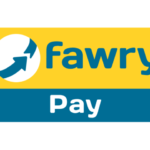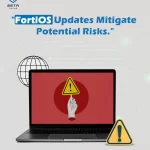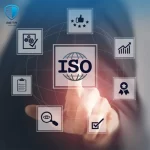In today’s digital landscape, web application security is more critical than ever. With cyberattacks becoming increasingly sophisticated, developers and security professionals must stay ahead of the curve to protect sensitive data and maintain user trust. One of the most valuable resources for understanding and mitigating common web application vulnerabilities is the OWASP Top 10.
The Open Web Application Security Project (OWASP) is a nonprofit organization dedicated to improving software security. Its OWASP Top 10 is a regularly updated list of the most critical security risks to web applications. This list serves as a foundational guide for developers, security teams, and organizations to prioritize their efforts in securing applications.
In this article, we’ll break down the OWASP Top 10, explain why it matters, and provide actionable insights for Meta Techs’ audience to strengthen their application security posture.

What is the OWASP Top 10?
The OWASP Top 10 is a consensus-driven document that highlights the most critical security risks facing web applications. It is based on data from thousands of applications and contributions from security experts worldwide. The list is updated periodically to reflect the evolving threat landscape
The OWASP Top 10 is not just a list of vulnerabilities; it’s a roadmap for developers and security professionals to identify, understand, and mitigate risks effectively. By addressing these top risks, organizations can significantly reduce the likelihood of a successful attack.
The OWASP Top 10
Here’s a brief overview of the OWASP Top 10 vulnerabilities:
1- Broken Access Control
Access control enforces policies to ensure users cannot act outside their intended permissions. Broken access control occurs when restrictions are not properly implemented, allowing attackers to access unauthorized functionality or data.
2- Cryptographic Failures
Previously known as “Sensitive Data Exposure,” this risk involves failures in protecting sensitive data, such as passwords, credit card numbers, or personal information, due to weak encryption or improper handling.
3- Injection
Injection flaws, such as SQL, NoSQL, or OS injection, occur when untrusted data is sent to an interpreter as part of a command or query. This can lead to data breaches or system compromise.
4- Insecure Design
This category focuses on risks introduced during an application’s design phase. Insecure design flaws can lead to vulnerabilities that are difficult to mitigate later in the development lifecycle.
5- Security Misconfiguration
Improperly configured security settings, such as default credentials, unnecessary features, or verbose error messages, can expose applications to attacks.
6- Vulnerable and Outdated Components
Using outdated or vulnerable third-party components (libraries, frameworks, etc.) can introduce known vulnerabilities into an application.
7- Identification and Authentication Failures
Weak authentication mechanisms, such as poor password policies or session management flaws, can allow attackers to compromise user accounts.
8- Software and Data Integrity Failures
This risk involves failures in verifying the integrity of software or data, such as insecure CI/CD pipelines or reliance on untrusted sources.
9- Security Logging and Monitoring Failures
Insufficient logging and monitoring can make it difficult to detect and respond to security incidents on time.
10- Server-Side Request Forgery (SSRF)
SSRF flaws occur when an attacker tricks a server into making unauthorized requests to internal or external systems.
Why the OWASP Top 10 Matters
The OWASP Top 10 is more than just a checklist; it’s a framework for building secure applications. Here’s why it matters:
- Industry Standard: The OWASP Top 10 is widely recognized and used by organizations worldwide as a benchmark for application security.
- Risk Prioritization: By focusing on the most critical risks, teams can allocate resources effectively to address the biggest threats.
- Compliance: Many regulatory frameworks and standards, such as PCI DSS and GDPR, align with the OWASP Top 10.
- Education: It serves as an educational tool for developers, helping them understand common pitfalls and how to avoid them.
How Meta Techs Can Leverage the OWASP Top 10
For Meta Tech’s developers and security professionals, the OWASP Top 10 provides a clear path to improving application security. Here are some actionable steps:
Conduct Regular Security Assessments
Use the OWASP Top 10 as a guide for penetration testing and code reviews to identify and remediate vulnerabilities.
Adopt Secure Coding Practices
Train developers to write secure code by addressing common risks like injection flaws and broken access control.
Implement Strong Authentication and Encryption
Ensure robust authentication mechanisms and use strong encryption protocols to protect sensitive data.
Keep Dependencies Updated
Regularly update third-party libraries and frameworks to avoid vulnerabilities in outdated components.
Monitor and Log Effectively
Implement comprehensive logging and monitoring to detect and respond to security incidents promptly.
Shift Left in the Development Lifecycle
Integrate security early in the development process to catch and fix issues before they reach production.
Conclusion
The OWASP Top 10 is an important resource for anyone involved in building or securing web applications.
By understanding and addressing these critical risks, Meta Techs can enhance its security posture, protect user data, and build trust with customers.
As the threat landscape continues to evolve, staying informed and proactive is key. Let’s prioritize security and work together to create a safer digital world.
Related posts:
 Fawry comments on cyber attacks and data leaking
Fawry comments on cyber attacks and data leaking
 Effective Policy for data retention policy best practices
Effective Policy for data retention policy best practices
 the Latest fortinet vulnerability 2024
the Latest fortinet vulnerability 2024
 What Is ISO 27001?, Core Principles, Benefits, and Requirements
What Is ISO 27001?, Core Principles, Benefits, and Requirements
 Cylance Protect Antivirus for Your Digital Assets
Cylance Protect Antivirus for Your Digital Assets
![Rapid7 Vulnerability Management]](https://meta-techs.net/wp-content/uploads/2025/03/What-is-Rapid7-Vulnerability-Management-1.webp)